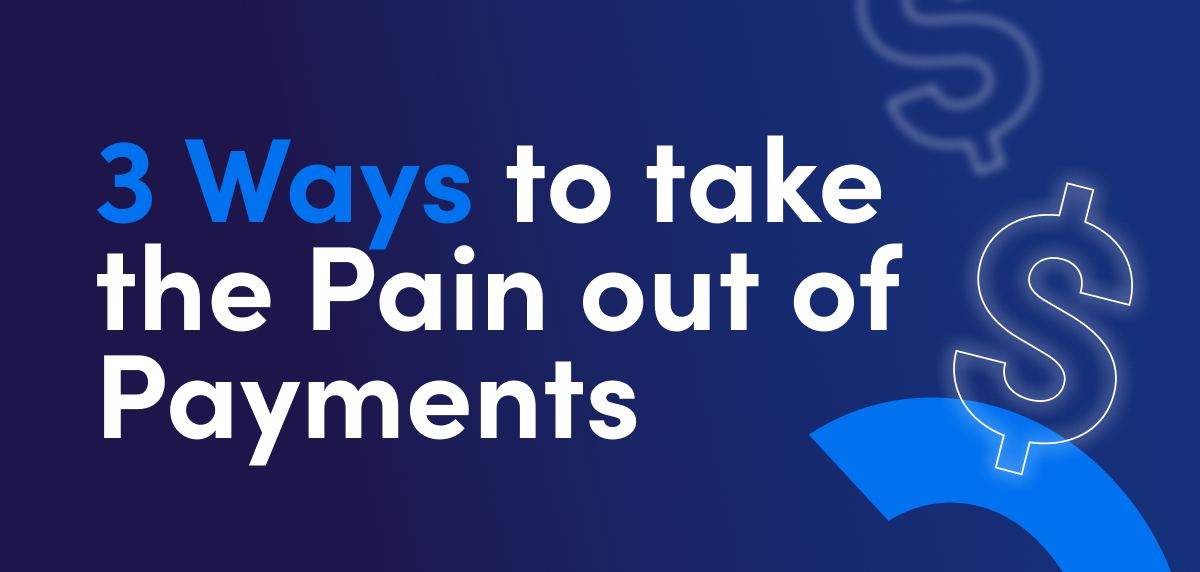
3 Ways to Take the Pain out of Payments
Payments are one of the most frustrating challenges facing cannabis today–so how do we relieve the pain?
Cannabis is glowing bright with potential and growing unprecedentedly despite its recent market hardships. Some reports project the global market to reach $73.6 billion by 2027. Stateside, US market sales are projected to exceed $50.7 billion by the end of this year.
However, despite the growth, payments continue to feel more like “painments” across the supply chain. The industry remains primarily cash-based due to federal regulations and banking hesitance. The current situation substantially hinders business operations in the booming nascent market.
But rather than just address the huge green elephant in the room, how do we resolve the problem?
1. Increased Payment Options
Industry-specific solutions help make payments simplified across the supply chain. Thanks to these services and platforms, more and more cannabis brands are saying goodbye to cash-only operations and hello to flexible, compliant payments.
Cannabis brands can easily pay supply chain partners thanks to innovations made in recent years. Using a secure, reliable B2B platform made for the cannabis space, companies don’t have to worry about having their banking or pay processing accounts shut down. These platforms are showing companies that you can securely send and receive B2B payments while complying to federal and state laws.
And it couldn’t come at a moment sooner. Due to federal laws, the entire supply chain languishes in a predicament where traditional payment options typically aren’t available.
Cannabis brands often run into issues paying vendors, retailers and other partners, just like customers. Many have tried to use traditional banking and digital payment services like Venmo, CashApp, Paypal, Stripe and countless other popular platforms. Some have been able to stay on as clients, but far too many have been shut down with little to no notice. Typically, the company cites a high risk profile or cannabis’ ongoing federal drug schedule status.
The predicament is likely to remain until lawmakers take action. Federal and state lawmakers have suggested change is close, but those rumors have been floated for years. Rather than wait, cannabis has done what it’s always done: make its own solutions.
2. Simplified and Centralized Payments
B2B transactions have never been more seamless and secure with pain-free payments now a reality in cannabis. Payments occur all from one central platform, providing the supply chain with reliability, security and efficiency.
These industry-specific platforms are finally taking unnecessary steps and wait times out of the pay process. The solutions have helped cannabis brands get paid in full, on-time and without waiting prolonged periods.
The innovations made by industry-specific tech solutions have also cut into a significant pain point in the payment process: Waiting to get your money.
Ask around and you’ll quickly discover that getting paid for wholesale orders is a struggle countless operators share. But it’s more nuanced than some may realize.
We’ve already touched on the limited options available, but that’s merely the half of it: using traditional payment platforms, companies can sometimes wait weeks to receive money they’ve rightfully earned. From single entity operators to large companies, far too many brands have been caught in this costly conundrum. That shouldn’t be the case for any business, especially cannabis, where slim margins are common as the market matures. Stuck in pay limbo, brands can only wait until their money is received. And in the world of cannabis, where first-mover advantage is crucial, companies can’t wait to get the money they deserve.
3. Avoiding Bad Debt
Cannabis brands can better avoid bad debt through customizable pay terms and secure payment platforms. Such solutions further help cannabis step away from cash-only payments while providing crucial debt collection assistance.
Without a secure payment platform, brands have to chase down delinquent payments or face the consequences. Getting paid can require a good deal of money and work, but cannabis companies have no other options. You either get the funds or take on bad debt.
Bad debt’s impact on a business is immense and extends well beyond the effects of missing funds. Operators typically need to hire debt collectors and/or lawyers to recover late payments. These services cost money and also take a cut of the funds collected. In a best-case scenario, a brand will only get some of the money it is owed.
Brands can also choose to do the work themselves in a bid to save some money. But with most companies already working with limited staff and funds, does your finance team have the staff or time to invest energy into the effort and divert away from daily work responsibilities? Most often don’t.
Adding to the pain, cannabis brands have to collect the funds. Otherwise, they’re set back in ways other industries don’t have to deal with. Under federal tax code 280E, cannabis brands cannot write off bad debt like federally legal industries are permitted.
Payments not “Painments”
Solutions are providing cannabis operators with the relief most have been seeking for years. Backed by centralized, efficient, industry-specific tech platforms, cannabis companies can finally say goodbye to many payment process pain points.
Innovative tech platforms are helping cannabis brands get paid, make payments and seamlessly receive funds. The progress has helped standardize cannabis via compliant, secure payment means.
With LeafLink, cannabis brands can compliantly set pay terms, make payments, receive the funds they’ve earned, and much more. Discover how LeafLink can help your company with payments today.